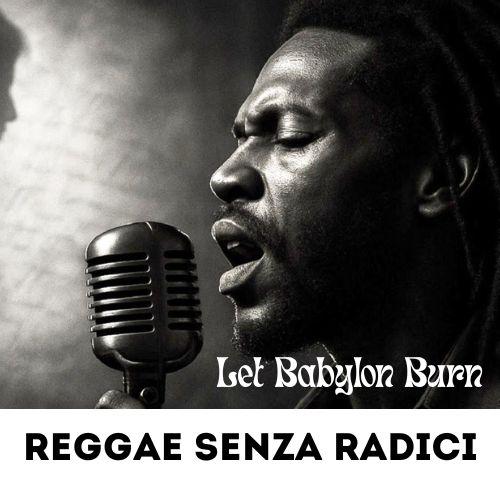🔥 Chapter One. A Phantom from the Ashes
Let Babylon Burn isn’t a band. It’s a phenomenon.
A spectral voice rising from the digital haze to remind us that art no longer needs a face.
In an age where every artist fights for visibility, Let Babylon Burn chooses to disappear.
No photos. No interviews. Not even a verifiable name.
Only sound — and images shaped by artificial intelligence.
And yet, within this mechanical landscape, something deeply human breathes.
⚙️ The Architecture of Sound
Try labeling their genre — and you’ll fail.
Industrial beats crash into reggae grooves, acoustic guitars dissolve into shimmering synths.
Every track feels like an alchemical experiment: metal, ash, and light.
“Embers” whispers before the fire ignites.
“Fault Line” trembles between duty and desire.
“So Hollow” is a ballad without a singer — a rastafarian figure with a guitar, generated by AI, existing purely as a metaphor.
There’s no imitation here. Only the will to experience sound as revelation.
🕶 Art Without an Author
Every visual element of Let Babylon Burn — from album covers to videos — is machine-made.
Their clips play like lucid dreams where no one wakes up.
The figure on screen doesn’t sing, doesn’t move lips — it simply exists, as if haunted by memory.
The only recurring name is Robert Lancaster, credited as songwriter on Apple Music.
But is he real? A pseudonym? An algorithm?
No one knows — and that’s precisely the point.
The absence of biography becomes an artistic statement.
“When the author disappears, meaning begins.”
🔥 The Philosophy of Fire
“Let Babylon Burn” is more than a provocative title — it’s a metaphor for purification.
In Rastafarian culture, “Babylon” represents oppression, materialism, and fear.
Here, the fire burns not the city, but the illusions within ourselves.
It’s not a rebellion against society — it’s a rebellion against self-deception.
Their sound carries a quiet revolution — no shouting, just steady inner fire.
🧠 AI and the Search for Humanity
Let Babylon Burn openly integrates AI into both sound and visuals, yet insists:
“This isn’t automated noise. It’s human-centered art.”
That line feels like a manifesto for our age of digital fatigue.
Can a song born half from algorithms still be called art?
And if it moves us — maybe the machine has simply learned how to mirror our souls.
🌌 A Digital Cult
Over 160,000 subscribers on YouTube. Thousands of comments that read like love letters to a ghost.
Listeners thank an invisible artist for helping them “survive pain.”
Let Babylon Burn has become more than music — it’s a collective hallucination, a shared myth built online.
🕯 Epilogue. The Language of Ash
A new mini-album, Ash Language, is reportedly in the works — to be recorded in forgotten, echoing spaces.
While some still wait to see the face behind the sound, others already understand: that’s the point.
Let Babylon Burn isn’t a person. It’s a mirror.
And if you still hear something alive in that fire — it means the world hasn’t gone silent yet.


Leave a Reply